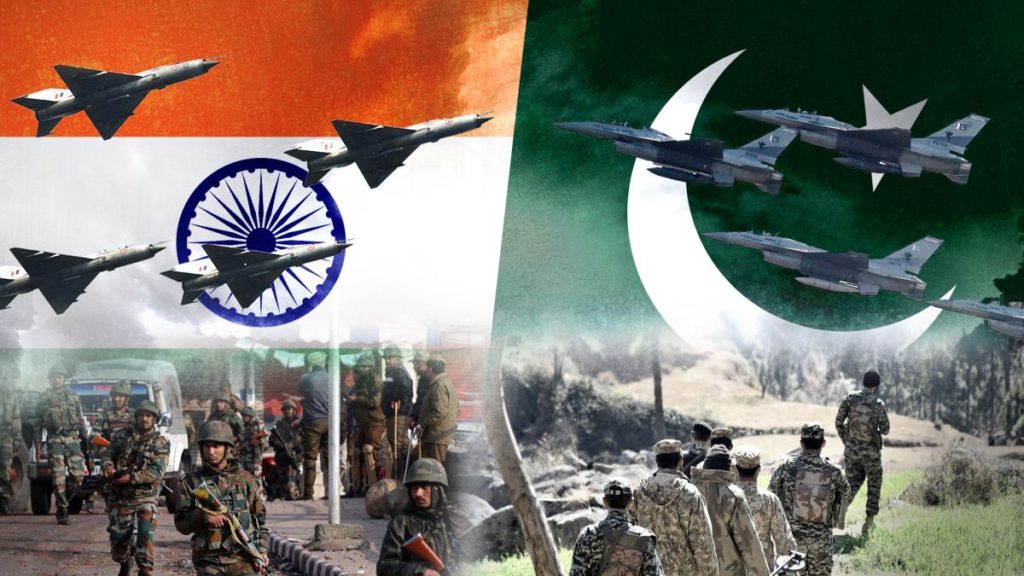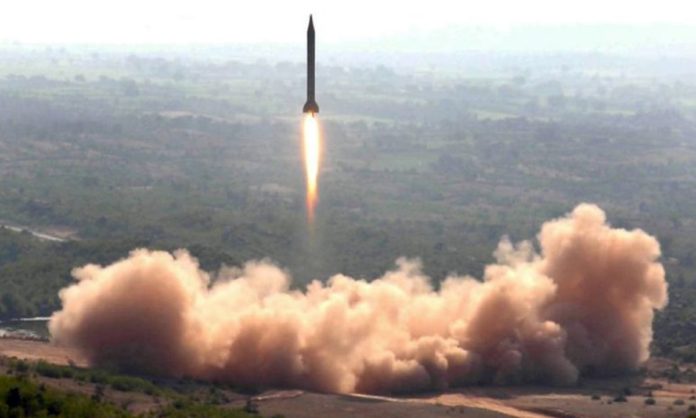It has been seventeen years since India and Pakistan carried out their nuclear explosions, surprised the world and shattered the innocence and romanticism of South Asia forever. India’s explosions were more status driven, while Pakistan’s explosions were security driven. The Indians also wanted to call the Pakistani bluff.
Since then, in all these years, the world has seen great changes. The South Asian sub-continent itself has become a more dangerous place militarily. In the absence of resolutions of the old historical disputes, strategists in both countries are increasingly relying on the use of the nuclear option, in both defensive as well as offensive operations.
The Indian numerical advantage in conventional forces has given them a superiority complex resulting in ideas like the “Cold Start Doctrine”. Pakistan, on the other hand, busy in the war on terror in FATA, is relying on its tactical nuclear weapons to neutralize any Indian adventure, which might be difficult to counter conventionally.
While using nuclear weapons against Japan the United States did not have any fear of retaliation from the Japanese. However, in the Pakistan-India scenario, both are equally armed.
Although nuclear weapons have been brought under effective command and control in both India and Pakistan, the fear factor of a first strike in a possible conventional conflict is a nightmare for both. Misunderstanding and fear of the other side striking first may lead to an actual preemptive strike by one of the two. For how long would a hard pressed military command wait for a civilian political decision to retaliate? With nuclear weapons.
We must endeavor to manage the risks and responsibilities arising from the ever increasing. Reliance on nuclear weapons. While we claim to have a viable command and control system in place and there is a nuclear doctrine, the civil/military decision on the final control and use of strategic and tactical weapons needs to be addressed urgently.
When, where and how are we going to use the nuclear weapons, if we are forced into that option? Have we addressed the shortcomings of our civil defence organizations capabilities in coping with a nuclear attack, especially its aftermath? Are our people (with their low literacy levels) aware of the after effects of a nuclear attack? The questions can be endless.
In spite of interactional opposition, further development of nuclear weapons is taking place at a fast pace and both India and Pakistan are endeavoring to perfect miniaturization of nuclear weapons. This Wil enable both the contestants to use tactical nuclear weapons even form artillery guns, tactical missiles on board ships and from tactical fighter aircraft. Even torpedoes and anti-ship missiles could be nuclear tipped. These are the weapons which can easily trigger a nuclear exchange leading to “City Busting”.
A conventional war could escalate I degenerate into a nuclear one. A skirmish on the cease-fire line in Kashmir could easily get out of control if one of the sides makes a deep dent into the territory held by the other side. The hard pressed side ultimately takes recourse to the use of tactical nuclear weapons to clear the enemy out. Elsewhere as well, there would be a desire to correct the imbalance in conventional armaments/forces by the introduction of tactical nuclear weapons. All hell would break loose because the other side would retaliate in kind tactically. Uninhabited or thinly populated areas like Siachen or the deserts of Rajasthan (a tactician’s paradise) are the most likely places where tactical nuclear weapons could be used with impunity without bothering about collateral civilian casualties. Value for human life in the Indian Pak subcontinent is such that even if civilian populated areas become major battlefields, no mercy would be shown by either side. From the cockpit of my fighter bomber aircraft, I have witnessed e horrors of a conventional Battlefield in be Akhnur-Chamb sector. I shudder to think what it would be like in a nuclear battlefield. The carnage overshadow the casualties cite of Somme, Flanders and Gallipoli (WWI) put together.
Sub-kiloton nuclear weapons mounted on anti-ship missiles and torpedoes could be effectively used carriers and warships of higher tonnage. In the absence of sufficient numbers of precision guided munitions (PGMs) -“Smart weapons”, the temptation would be to use tactical nuclear weapons in order to destroy important tactical and strategic-high risk targets, which would otherwise require high intensity bombardment by conventional weapons. Bridges, powerhouses, gird stations, TV radio transmitting stations, airfields, oil refineries, ammunition/ POL dumps, high value industries and many other important, economic and military targets, could be easily destroyed. The temptation to use sub-kiloton weapons would be irresistible.

In a nuclear battlefield scenario the protection of combat troops would be a nightmare. Infantry units, a (tillery and tank formations would have very different requirements and logistic support would become very difficult. The troops would have to be trained to fight and survive in a nuclear battlefield. The operational effectiveness of troops, in a post nuclear attack battle field scenario, would be extremely degraded. Similar problems would be faced for the protection and damage control at airfields, harbors and even surface warships at sea. We must remember that soldiers (even of the enemy) are human beings and children of the same God. The radioactive fallout from the use of numerous small tactical nuclear weapons would be sufficient to affect the ecological balance over a large area.
In a free for all scenario, just talking about the big cities, the scene would be horrendous. The protection of citizens would present an impossible task, especially in a creaking civilian administrative set up such as ours. How efficient would be our firefighting services, if any are left at all. What about casualty evacuation? Are our hospitals, if left standing, equipped and doctors trained to treat victims of a nuclear attack. In any future conflict, when and where a nuclear attack comes, is quite unpredictable. The speed with which devastation takes place would not let a person run for an underground nuclear shelter. However, if we went about building these shelters (supposing there was sufficient warning) for how many people would we have these shelter and what would be the cost? Do we have any nuclear command posts, even for the leadership, both civil as well as military, which is going to conduct and direct the war? (There used to be building bye-laws requiring the construction of underground cellars below houses, are they still belong implemented?) Do we have any underground hospitals?
The aftermath of a nuclear clash between the two neighbors would be even more painful. I for one would like to be either at ground “zero” so that I am vaporized in a second, or be thousands of miles away so that I can continue living a normal life. Anything in between would be affected to varying degrees with multiple diseases, sickness and human misery. Imagine a society without electricity, gas and water, without any telecommunications, without any modes of transportation, with various diseases but without any hospitals, without any law and order and with radioactive contaminated food and water. All in all, by the end of the day, the two great civilizations of the Indus and the Ganges would have destroyed themselves into the stone-age.
Although the acquisition of nuclear muscle by Pakistan and India has ensured that they do not become another Afghanistan, Iraq or Yugoslavia, it has added a heavy responsibility on both (At the height of tensions in the post OBL and Salalah massacres, Christian Fair of Georgetown University Washington had remarked that Pakistan would have been sorted out by now if it did not have nuclear weapons). These are not ordinary weapons and both countries would have to face a host of new problems. Both would be fooling themselves if they believed that their nuclear capability has made their defence impregnable because the nature of war itself is changing. However, both must remain conscious of the risks and responsibilities and make the people aware of the seriousness of nuclear weapons, while preparing them to face the consequences in totality. The electronic media and the vernacular press in both countries has a great responsibility in this regard and it is hoped that it would come up to expectations. Both countries must continue to exercise restraint and endeavor to find peaceful solutions to problems like Kashmir.




